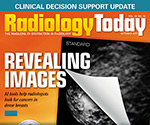 |
October, designated Breast Cancer Awareness Month, is an appropriate time for professionals and patients to contemplate and assess this disease, which currently affects more than 3 million Americans and has taken its toll on countless families through the generations. In this month’s e-News Exclusive, Philadelphia’s Fox Chase Cancer Center offers some timely advice regarding warning signs, risks, and recommendations. We hope their insights help radiologists secure better outcomes for their patients and loved ones.
— Dave Yeager, editor |
 |
 |
Breast Cancer Awareness: Risks, Signs, and Screening
October is Breast Cancer Awareness Month, a time to celebrate the more than 3.1 million breast cancer survivors across the United States. Fox Chase Cancer Center stresses the importance of getting regular screening tests for breast cancer, as it is the most reliable way to find breast cancer early.
“Breast cancer can be treated more successfully if detected in its early phases, while it is small and has not yet spread,” says Kathryn Evers, MD, director of mammography at Fox Chase in Philadelphia. “With today’s state-of-the-art treatment options and less extensive surgery, patients are experiencing better outcomes.”
According to the American Cancer Society (ACS), breast cancer is the second-leading cause of cancer death in women. It is more common in white and black women compared with women of other races/ethnicities. The ACS estimates that, in 2017 alone, about 40,610 women will have died from breast cancer.
Risk Factors
The main risk factors for breast cancer include being a woman, getting older (most breast cancers are diagnosed in women after age 50), and having changes in certain breast cancer genes (BRCA1 and BRCA2). Other uncontrollable factors that may increase risk include personal/family history, race, breast density, and menstrual period history.
Full story » |
 |
|
|
 |
“It’s not possible at this point in time to say with any degree of certainty that a person does or does not have chronic pain based on brain imaging. The only way to truly know if someone is in pain is if they tell you, because pain is subjective, and it is a complex experience. No brain scan can do that.”
— Karen Davis, PhD, a professor in the department of surgery and Institute of Medical Science at the University of Toronto |
 |
|
